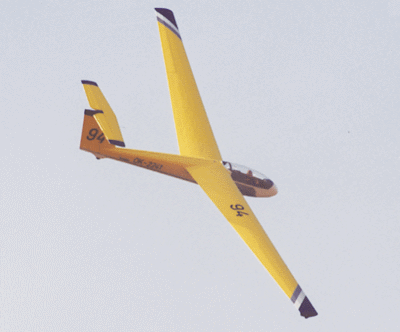Fri, Oct 05, 2012
Addition To CAP Soaring Fleet Comes As Glider Program Celebrates Banner Year Of 10,000-Plus Flights
Twelve TG-10B (L-23 Super Blanik) gliders from the U.S. Air Force Academy in Colorado Springs now belong to Civil Air Patrol. The recent Air Force transfer of the aircraft to CAP is a boost to the Air Force auxiliary’s glider program. It will allow the Air Force auxiliary to replace some of its older gliders and help modernize its existing fleet of 42 gliders.

Ten of the Air Force Academy gliders will be used to upgrade the CAP soaring fleet, but two others not considered airworthy will be stored to supply parts for those that are in use. Eight of the gliders also come equipped with trailers to be used for storage and transportation. “This comes at a great time,” said Col. Mike Murrell, CAP’s national deputy chief of staff for operations. “The transfer gives us the opportunity to both upgrade the glider fleet and enhance the overall program, which – thanks to the efforts of a lot of dedicated glider and cadet program volunteers – just celebrated its most successful year in recent memory.”
In fiscal year 2012, CAP flew 10,249 glider sorties (mostly cadet orientation and training flights) – more than any year since 2005 when CAP began tracking glider flights online. “Having these Air Force Academy gliders in CAP’s air fleet will help us provide youth with even more flights in the coming year,” said Murrell. “This is an exciting development, sure to enhance our cadet recruiting and retention efforts.”
A conventional two-place tandem, basic training sailplane, the TG-10B is one of the world’s most common soaring trainers. It has been used by the Air Force Academy for a number of years to introduce its cadets to flight.
Like the Air Force Academy, CAP uses its gliders to introduce America’s youth to flight through its cadet orientation program. The opportunity to fly is a major attraction for cadets; almost 32,000 orientation flights were provided in CAP’s gliders and powered aircraft over the past year.
In addition to its cadet orientation flights, CAP offers three national glider academies and a number of region and wing glider encampments each summer at different locations throughout the U.S. The glider academies and encampments are specifically designed for cadets who want to learn to fly. Participants receive formal ground instruction and cockpit time with a certified flight instructor, and some participants get the opportunity to solo.
(Photo provided by CAP)
More News
A Puff Of Smoke Came Out From The Top Of The Engine Cowling Followed By A Total Loss Of Engine Power On May 9, 2025, about 1020 mountain daylight time, an experimental amateur-buil>[...]
From 2022 (YouTube Edition): Jenny, I’ve Got Your Number... Among the magnificent antique aircraft on display at EAA’s AirVenture 2022 was a 1918 Curtiss Jenny painstak>[...]
Very High Frequency (VHF) The frequency band between 30 and 300 MHz. Portions of this band, 108 to 118 MHz, are used for certain NAVAIDs; 118 to 136 MHz are used for civil air/grou>[...]
“From approximately November 2021 through January 2022, Britton-Harr, acting on behalf of AeroVanti, entered into lease-purchase agreements for five Piaggio-manufactured airc>[...]
Microburst A small downburst with outbursts of damaging winds extending 2.5 miles or less. In spite of its small horizontal scale, an intense microburst could induce wind speeds as>[...]
 NTSB Prelim: Lee Aviation LLC JA30 SuperStol
NTSB Prelim: Lee Aviation LLC JA30 SuperStol Classic Aero-TV: Curtiss Jenny Build Wows AirVenture Crowds
Classic Aero-TV: Curtiss Jenny Build Wows AirVenture Crowds ANN's Daily Aero-Term (05.30.25): Very High Frequency (VHF)
ANN's Daily Aero-Term (05.30.25): Very High Frequency (VHF) Aero-News: Quote of the Day (05.30.25)
Aero-News: Quote of the Day (05.30.25) ANN's Daily Aero-Term (05.31.25): Microburst
ANN's Daily Aero-Term (05.31.25): Microburst



